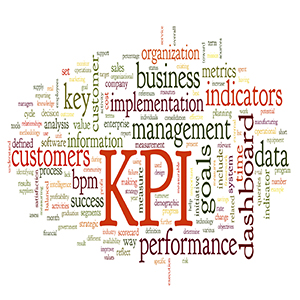Five Tips to Consider When Designing Supply Chain Key Performance Indicators

You can’t predict anything with 100% certainty, and your predictive power wanes the farther out you gaze. The study of KPIs over time is all about finding patterns and signals, then applying intelligence in order to make better decisions and gain wisdom.
In my last post I focused on the pitfalls associated with supply chain KPI and metrics development. In this post, I’ll cover how businesses can improve their supply chain measurement processes by avoiding the common pitfalls by keeping in mind a few simple hints.
1. Don’t start by asking for a list of everyone’s metrics
You don’t need to create a collection of all things measurable. With massive amounts of new (and sometimes big) data being added to corporate databases every day, the permutations will grow and the questions that can be asked simply become more confusing.
Start fresh and start at the top. Focus on KPIs that shed light on progress toward achieving strategic business goals.
2. A measure in and of itself is not a KPI
A KPI is a metric upon which you can take action to change an outcome. If I want to impact my sales for month, monitoring “sales” as a KPI doesn’t give me any actionable data. Think about it, you can’t impact sales, by knowing where sales are. If you want to impact the sales number, then you need to measure the root cause of “sales.”
If sales are a function of the order status, and that knowing how many orders are “on Hold”, “Back Ordered”, or “Shipped” allows you to proactively take action on a metric that can be influenced. If you see the Back Orders increasing, well, we can have a talk with the team who is responsible for inventory management.
3. You can’t have 20 KPIs
You can have 20 PIs, but not 20 KPIs. Don’t try to measure everything. It’ll take too long, and you’ll end up measuring things that don’t matter. Despite its MBA-ish name, the “MECE” (mutually exclusive, collectively exhaustive) test will help guide your thinking as you consolidate and refine KPIs.
Root out overlap in source data across your KPIs. Do you have three KPIs that all rely on the same underlying metrics? If so, are you merely taking three slightly different pictures of the same subject?
Here’s a useful litmus test for deciding what’s worthy of being a KPI. Think about the last time your CEO said: “I just have a minute before I board the plane. Tell me what’s going on.”
What did you say? What was the CEO’s response?
4. Don’t allow squishiness
Make sure all agree on the definition of the KPI, and be wary when departments or divisions say things like “We need to measure that differently over here.” Do that and you’ll no longer have “one version of the truth,” and your Business Information becomes Business Mis-Information.
Additionally, make sure the stakeholders believe either that the source data is sound or that there’s a credible plan in place to make it so. Trust is important.
5. Finally, remember that all things vary
Causality is very complex. Just ask a meteorologist who doesn’t work in San Diego. The weather is tough to predict, and so is a coin flip. Do you know why we consider a coin flip a 50/50 proposition? Because we can’t observe, measure and correctly interpret the many forces simultaneously working on the coin while it’s in the air. If we could, the outcome of a coin flip wouldn’t be deemed random at all.
The point is this: you can’t predict anything with 100% certainty, and your predictive power wanes the farther out you gaze. The study of KPIs over time is all about finding patterns and signals, then applying human intelligence in order to make better decisions and gain wisdom. Pursue the development, study and refinement of KPIs not because it makes you perfect, but because it makes you better.

About the Author
Ray Major is the Chief Strategist of Halo Business Intelligence. A data scientist, economist and statistician by training, he’s a life-long practitioner in the mysterious arts of data intelligence and analytics.
You can contact Ray by email at [email protected] and also follow him on Twitter at @majorbi
Related: Common Pitfalls to Avoid When Designing Supply Chain Key Performance Indicators

Article Topics
Halo Business Intelligence News & Resources
Logility Acquires Halo Business Intelligence to Expand Data Visualization & Advanced Analytics Automate the Boring but Essential Parts of Your Data Warehouse The World’s Largest, Fastest, Most Agile Supply Chain How to Improve Your Receivables Position with Better Risk Analysis How to Stay Out of Cash Flow Crises Using Cash Position Analysis Supply Chain Key Performance Indicators How to Get Started with Value Add Forecasting More Halo Business IntelligenceLatest in Supply Chain
Baltimore Continues Bridge Recovery With Opening of New Channel Ask an Expert: How Shippers Can Prep for Hurricane Season Apple Accused of Multiple Human Rights Violations South Korea Finally Overtakes China in Goods Exported to U.S. UPS Struggles in First Quarter With Steep Earnings Decline How Supply Chains Are Solving Severe Workplace Shortages SAP Unveils New AI-Driven Supply Chain Innovations More Supply Chain













